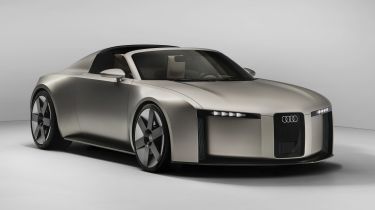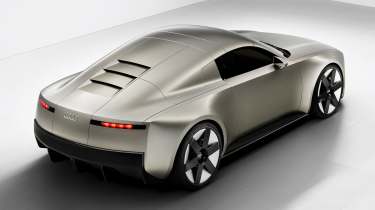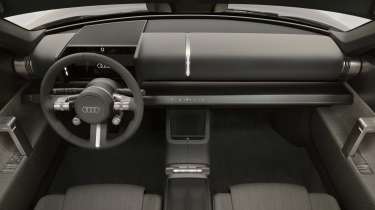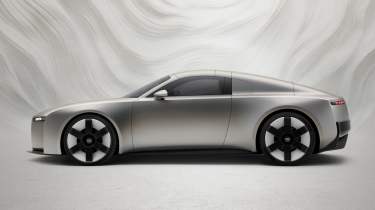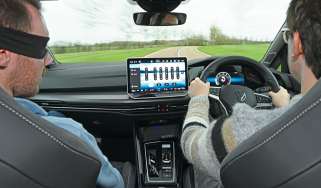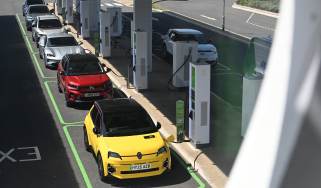New Audi TT: full details on the iconic coupe’s EV return
Audi’s new all-electric sports car will debut the brand’s latest design language, previewed by the striking Concept C
The Audi TT is set to make a sensational return after the German brand revealed the Concept C at the Munich Motor Show in September. The striking concept previews a future all-electric sports car and also a dramatic change in how Audi cars will look and feel over the coming years.
The design philosophy is the brainchild of new chief design officer Massimo Frascella, who plans to tone down the look of future Audis with a cleaner and more sophisticated style. The Concept C is the first step on this path.
If you prefer Audi’s previous design, it's never too late to own one of its great sports cars of the past. You can buy a used Audi TT from £8,500 through our Buy A Car service.
What will the new Audi TT look like?
As the Concept C shows, Audi’s new electric roadster will be a genuinely clean-sheet design. The Concept C bears no relation to any current Audi and digs through the brand’s illustrious history to inform and inspire certain elements. Audi says that the key inspiration came from two cars in its back catalogue: the Auto Union Type C racer from the 1930s, and the iconic TT.
Its reference to the Type C racer can be seen in the attention-grabbing narrow and upright grille, with new, simple lighting on either side of it. In the place of Audi’s complex lighting signatures is a simple, four-line graphic that reflects the four rings of Audi’s logo.
A key design element that relates to the original TT is the windscreen, which slips underneath the bonnet at its base, but ends in two perfect radiuses when it reaches the roof. From there we can see a join line – that’s because this car has a folding hard-top, which can be lowered to reveal the simple cabin.
The Concept C’s silhouette isn’t unlike that of an R8, but has a shorter wheelbase and longer overhangs relative to it. This is typical of a compact mid-engined car, rather than an out-and-out supercar. We can also see a small nod to the second-generation R8 in the outlined rear ‘window’ that includes no glass – while not certain to make production, this is a very interesting design inclusion.
The rear is perhaps the concept’s most dramatic angle, with only a few design elements to distract from the overall shape. Narrow slats on the rear deck again reference the Type C racer, but in a very subtle and elegant way. The six-spoke wheels and warm silver paintwork speak to the original TT.
All of these design themes are expected to be used on the production car, which we’re told is 90 per cent of what we see here on the Concept C.
A final note is the badge. Audi controversially changed its logo to a new flat design in grey a few years back. The one fitted to this concept car hasn’t lost the overtly modern flat characteristic, but it has returned to a brushed metal finish.
What will the Audi TT’s interior look like?
As on the exterior, every line, crease and material inside of the Concept C has been pared back to the absolute minimum, overlaid with a combination of materials such as warm grey fabric and leather, and aluminium.
Digital interfaces are restrained; the main infotainment display folds under the dash and it’s surprisingly moderate in size. When it’s folded away, the interior gives the impression of having just one display integrated into the dashboard in front of the driver. However, sitting above the main driver’s display is a narrow screen that shows just speed – this is something Audi’s interior designers wanted to incorporate to allow drivers to go screen-free when they want to.
There are lots of aluminium design highlights inside, too, such as the grab handles on the doors, which look like some form of industrial hinge, plus the restrained, simple and perfectly round steering wheel.
When will we see the new Audi TT on the road?
In a literal sense, the Concept C is a two-seat electric sports car that will go into production from 2027. Audi CEO, Gernot Döllner, told us: “We won't show [concept] studies anymore. When we show things [they] will be substantial. And every concept we’re showing will have a product decision behind.”
While there’s little more detail than that on offer for now, we do know that Porsche is already a fair way through the development of its electric 718 sports car platform. This gives the Audi concept a platform to sit on, suggesting that we won’t have to wait too long to see the future production car.
The architecture will feature a new layout of batteries in a stack behind the driver. This will more accurately mimic the weight distribution of a mid-engined sports car, giving models on this platform a more distinct road feel. This also allows the driving position to be much lower in the chassis than if the batteries were mounted along the entire cabin floor.
This is still a risk; the size of the market for an electric sports car is still unknown. But if Audi also uses the platform, it will help Porsche’s business case by spreading some of the investment between the two brands.
Why is Audi making such a big change?
We don’t often get caught up in the politics of car design, but this concept is a mission statement from Frascella. Formerly employed by Land Rover, he is the father of the modern Range Rover, and was brought in to replace Marc Lichte, who had been leading Audi down a path of complex and aggressive design. The Concept C is a rebuke to that.
To fully achieve this, it has to do two things beyond just previewing a new model. The first is to set Audi on a design path towards the future – one occupied not just by traditional premium rivals such as BMW and Mercedes, but also by brands from across a wider spectrum vying for global attention.
Its second job is to do this by tapping into the brand’s near-100-year heritage. With electrified powertrains – and the influx of digital interfaces inside the cabin – comes less chance for manufacturers to create a unique selling point.
Audi needs to put itself on a higher plane in this regard, which means that referencing its heritage through design is a critical move as the brand battles shrinking market share in Europe and abroad. Audi’s design language is now just as important as a straight-six engine in a BMW, or a Volvo’s safety credentials.
The first Audi with this new design language will be this all-electric sports car that’ll hit the road in 2027. From then on, expect a very different type of Audi from the one we see today
Did you know you can sell your car with Auto Express? Get the highest bid from our network of over 5,500 dealers and we'll do the rest. Click here to try Auto Express Sell My Car now...
Find a car with the experts

